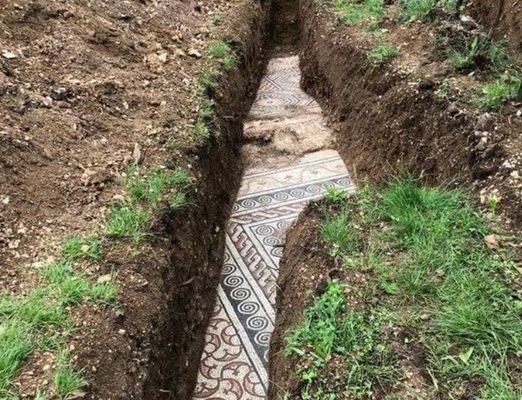For almost a century, archaeologists have been trying to find the remnants of an ancient Italian villa. Years of digging eventually yielded their reward: a magnificent Roman mosaic tucked away behind a farm in the hills above Negrar di Valpolicella in northeastern Italy.
It is thought that the finely carved floor came from the same villa as the one that was found all those years ago. The mosaic is composed of multiple painstakingly arranged marble and glass tesserae and geometrically patterned motifs. The floor has been patched up many times, as shown by the numerous layers of mortar beneath the mosaic’s vibrant design.

This discovery is advantageous to villagers as well as archaeologists. The mosaic will act as a window into this region of Italy’s past and present as well as a representation of the importance of finishing a project. It’s a unique discovery, and maybe it will motivate upcoming generations to continue looking for more.

The stunning mosaic floor, which dates to the third century AD, is the focus of much research as experts figure out the most efficient and risk-free method to excavate it.
This Roman mosaic, which was discovered on a farm more than a century ago near Verona, Italy, has significant historical significance. They were able to find the ground and the foundation of the Roman villa as a result of this finding, giving them a glimpse into the past.
They won’t be able to damage the exquisite artwork by carefully excavating the area. By doing this, we can learn a great deal about the traditions and practices of our ancestors and improve our understanding of how they lived in the distant past.
Additionally, it might disclose important information about their abilities and originality. Additional research can provide new insights into this intriguing age.

The site had been abandoned since 1922 when the group headed by Verona’s Superintendent of Archaeology, Fine Arts, and Landscape started a fresh dig there this past summer.
They started looking and very quickly found an intriguing relic that had escaped them for nearly a century. An archaeologist named Myko Clelland tweeted about the discovery after finding it online, and it rapidly gained a lot of attention.
Now, the Superintendence must decide how to best present this archaeological find to tourists by working with the landowners and the local government.

Such an undertaking requires time and resources, and the progress of the procedure must be properly monitored at all times. People will be able to learn more about this unique culture and appreciate it in its proper context if this hitherto obscure piece of history is made public.
Please SHARE this amazing discovery with your Family and Friends!




